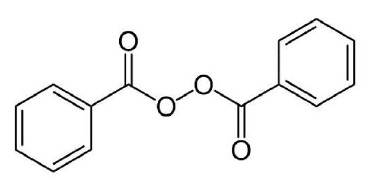Erythromycin And Benzoyl Peroxide
Erythromycin And Benzoyl Peroxide Prescribing Information
Erythromycin and Benzoyl Peroxide Topical Gel USP is indicated for the topical treatment of acne vulgaris.
Erythromycin and Benzoyl Peroxide Topical Gel USP should be applied twice daily, morning and evening, or as directed by a physician, to affected areas after the skin is thoroughly washed, rinsed with warm water and gently patted dry.
Erythromycin and Benzoyl Peroxide Topical Gel USP is contraindicated in those individuals who have shown hypersensitivity to any of its components.
In controlled clinical trials, the incidence of adverse reactions associated with the use of Erythromycin and Benzoyl Peroxide Topical Gel USP was approximately 3%. These were dryness and urticarial reaction.
The following additional local adverse reactions have been reported occasionally: irritation of the skin including peeling, itching, burning sensation, erythema, inflammation of the face, eyes and nose, and irritation of the eyes. Skin discoloration, oiliness and tenderness of the skin have also been reported.
Erythromycin and Benzoyl Peroxide Topical Gel USP contains erythromycin [(3R*, 4S*, 5S*, 6R*, 7R*, 9R*, 11R*, 12R*, 13S*, 14R*)-4-[(2,6-Dideoxy-3-
Chemically, erythromycin is (C37H67NO13). It has the following structural formula:

Erythromycin and Benzoyl Peroxide Topical Gel USP also contains benzoyl peroxide for topical use. Benzoyl peroxide is an antibacterial and keratolytic agent.
Chemically, benzoyl peroxide is (C14H10O4). It has the following structural formula:

Each gram of Erythromycin and Benzoyl Peroxide Topical Gel USP contains, as dispensed, 30 mg (3%) of erythromycin and 50 mg (5%) of benzoyl peroxide in a base of purified water USP, carbomer 940 NF, ethyl alcohol 20%, sodium hydroxide NF, docusate sodium and fragrance.
The exact mechanism by which erythromycin reduces lesions of acne vulgaris is not fully known; however, the effect appears to be due in part to the antibacterial activity of the drug.
Benzoyl peroxide has a keratolytic and desquamative effect which may also contribute to its efficacy. Benzoyl peroxide has been shown to be absorbed by the skin where it is converted to benzoic acid.